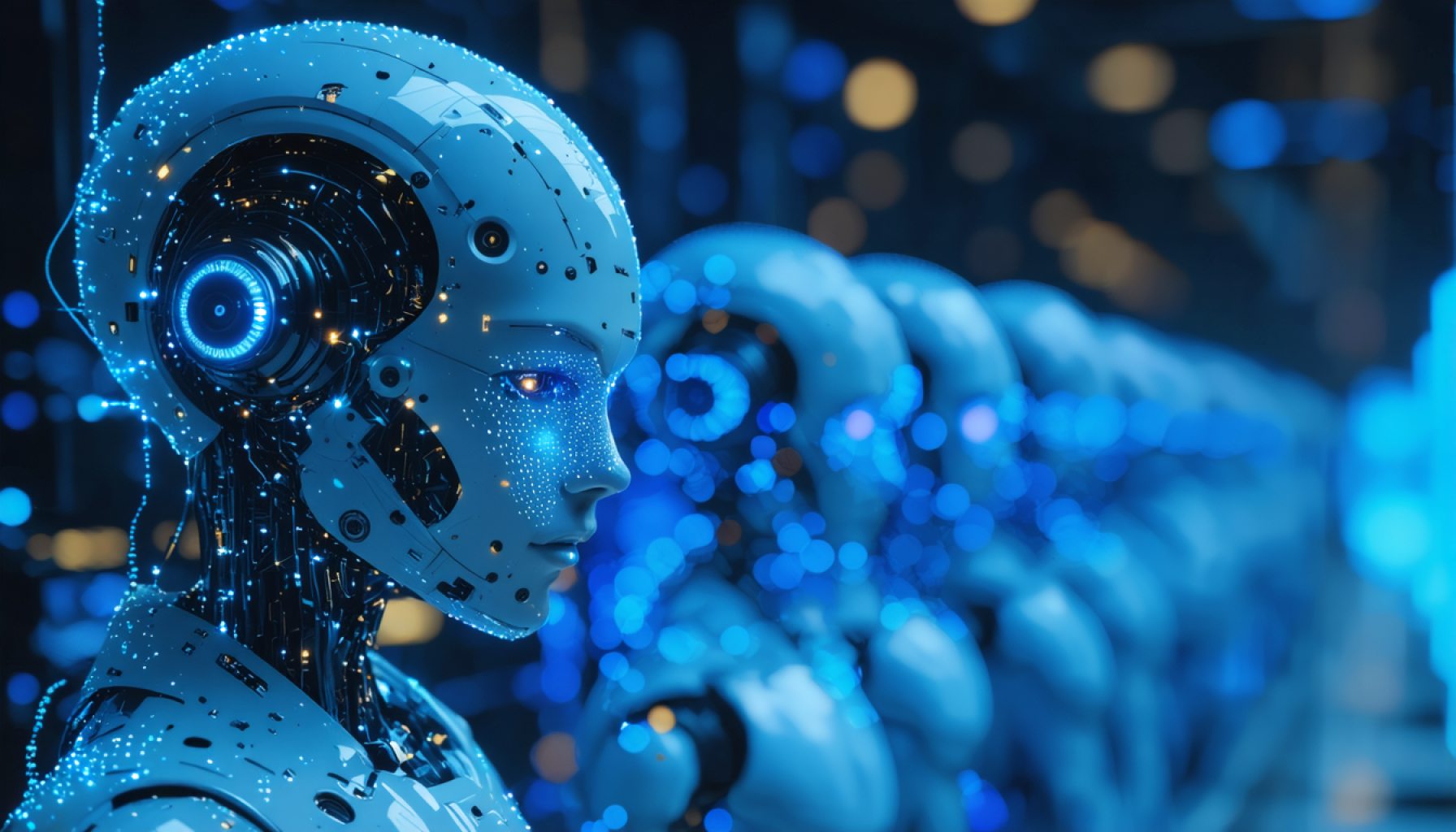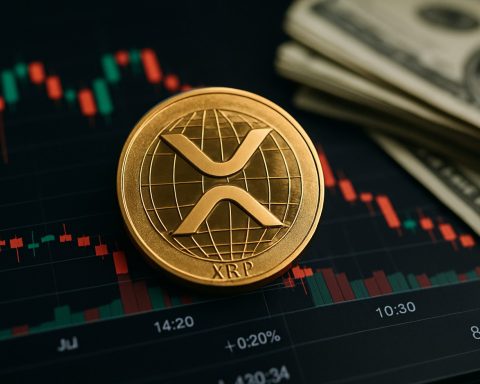- Artificial intelligence’s rapid integration into daily life brings challenges in control, transparency, and ethics.
- Bittensor proposes a decentralized AI network, aiming for openness and fairness beyond centralized controls.
- The TAO token powers Bittensor’s ecosystem, encouraging merit-based rewards without privileged allocations.
- Consisting of over 90 specialized subnets, Bittensor fosters innovation, allowing AI models to compete and excel.
- The Yuma Consensus mechanism ensures valuable contributions are rewarded, enhancing network credibility and efficiency.
- Delegators can stake TAO with promising validators for rewards, assisted by platforms like Taostats.
- Bittensor’s decentralized approach offers a transparent, bias-free alternative to traditional AI models.
- Emphasizing democratization, Bittensor promotes AI as a shared asset, advocating for an accountable technological future.
Artificial intelligence, once a realm of science fiction, has become an indomitable force in our daily lives, evolving rapidly into a technology with profound implications. Yet, this meteoric rise also ignites critical debates around control, transparency, and ethics. Who ultimately governs the AI brain that impacts everything from mundane tasks to critical decision-making? That’s where Bittensor steps in, promising a paradigm shift by propelling a decentralized network—a veritable ‘Neural Network’ of interconnected AI systems that can learn, adapt, and grow, unshackled from the constraints of centralized control.
Picture a world where AI models collectively work, challenging the dominance of a few tech behemoths. This is the brave new frontier of Bittensor, a pioneer in building a blockchain-powered AI ecosystem that broadcasts a clarion call for openness and fairness.
At the heart of Bittensor’s ecosystem is the TAO token, the digital lifeblood that fuels all economic activities within the network. Much like Bitcoin, TAO is engineered with scarcity and value ingrained in its fabric—emerging from a capped supply that mimics Bitcoin’s halving schedule. Without ICOs or privileged allocations, every TAO token in circulation is earned through active participation, underscoring a meritocratic approach where contributions dictate rewards.
Bittensor’s architecture is as intriguing as it is innovative. The network comprises over 90 specialized subnets, each a microcosm of AI innovation. These subnets tackle myriad tasks—from language generation to complex scientific computations—turning the network into a bustling marketplace of ideas and solutions. Here, miners compete to exhibit their models’ prowess while validators act as judges, ensuring that only the best and most efficient models achieve prominence.
The evaluation process, known as the Yuma Consensus, is the network’s lynchpin, ensuring that participants who add the most value are duly rewarded. This sophisticated mechanism delivers credibility and efficiency, attributes that are often lost in opaque centralized AI operations.
Delving deeper into the network, delegators have the opportunity to stake TAO, aligning themselves with promising validators to earn rewards—a process facilitated by platforms like Taostats for easy engagement.
As traditional AI models wrestle with issues of transparency and bias, Bittensor offers a compelling alternative: a decentralized and resilient platform that redefines how intelligence is shared, validated, and rewarded. This democratization holds promise for greater integrity and truthfulness in AI responses, countering the propensity of mainstream platforms to curate narratives.
In our ever-evolving digital landscape, Bittensor stands as a beacon for those championing decentralization. It encourages a future where AI is not a tool of the few but a shared asset of many, underscoring a crucial tenet for tomorrow—AI needs to be accountable to all, not just the powerful. As we edge closer to a tech-driven society, Bittensor invites us to rethink, innovate, and embrace a more equitable technological future.
Is Bittensor the Future of AI? Exploring the Decentralized Revolution
The Dawn of Decentralized AI with Bittensor
Artificial intelligence is at a critical juncture, as its rapid evolution sparks widespread discussions about control, transparency, and ethics. Bittensor offers a groundbreaking alternative by creating a decentralized network of interconnected AI systems that operate without centralized constraints. This innovation challenges the status quo and proposes a new paradigm in AI governance and development.
Key Features and Mechanics of Bittensor
1. TAO Token and Economic Model:
– TAO tokens are the bedrock of Bittensor’s economic model, enabling transactions and incentivizing network participation. They have a capped supply and are distributed based on merit through active contributions, reflecting a Bitcoin-like scarcity model.
– No initial coin offerings (ICOs) or privileged allocations ensure a fair distribution that rewards genuine contributors.
2. Architecture of Subnets:
– Bittensor comprises over 90 specialized subnets. These subnets handle diverse AI tasks—from natural language processing to complex algorithmic computations.
– Each subnet operates as a marketplace of ideas, fostering innovation and collaboration among AI models.
3. Consensus and Evaluation:
– The Yuma Consensus is the core mechanism that ensures only the most valuable AI contributions are rewarded. It establishes credibility and offers transparency, subverting traditional centralized evaluation methods.
4. Role of Miners, Validators, and Delegators:
– Miners produce AI models to solve specific tasks and compete for rewards.
– Validators assess and rank these models, ensuring efficiency and capability.
– Delegators can stake their TAO to support promising validators, aligning their interests with network success.
Real-World Applications and Industry Potential
– Decentralization Benefits:
– By dismantling centralized control, Bittensor democratizes AI development, fostering a more inclusive and resilient AI ecosystem that enables various stakeholders to partake in technological advancements.
– Mitigating Bias and Increasing Transparency:
– The decentralized structure potentially reduces biases prevalent in traditional AI systems and enhances the integrity of AI responses across domains.
Controversies and Limitations
– Scalability Concerns:
– Like any blockchain-based system, questions about scalability and network congestion may arise, especially as the network grows and incorporates more AI models and data.
– Regulatory Challenges:
– As decentralized systems often operate in legal gray areas, regulatory frameworks might struggle to keep up with technological advancements, posing potential challenges to widespread adoption.
Forecasts and Future Directions
– Market Growth:
– The blockchain and AI industry is projected to grow exponentially, with decentralized technologies like Bittensor leading the way. This presents a lucrative opportunity for early adopters and contributors.
Actionable Recommendations
– Dive In:
– Participate in the Bittensor network by becoming a validator, miner, or delegator to delve into the world of decentralized AI.
– Education and Awareness:
– Stay informed about the latest developments in decentralized AI systems to understand their impact on various sectors.
– Stake Wisely:
– Use platforms like Taostats to make informed decisions when staking TAO tokens to maximize potential rewards.
For more insights and updates on AI and blockchain technologies, visit the [Bittensor website](https://bittensor.com).







